Canon EF-S 17-85mm f4~5.6 IS USM lens review
-
-
Written by Gordon Laing
Quality
Resolution Results
To measure resolving power we photographed the standard ISO 12233 test chart with each lens at f8 using a Canon EOS-350D / Rebel XT in Aperture Priority mode. The crops are taken from the originals and presented here at 100%. Each number represents 100 lines per picture height (lpph), so a figure of 18 means a resolution of 1800 lpph.
The image left was taken with the Canon EOS-350D using the 17-85mm EF-S at 35mm f8; the original JPEG measured 2.50MB. With 1800 lpph of horizontal and vertical resolution, the 17-85mm EF-S slightly out-performs the 18-55mm EF-S, although the 17-40 EF L squeezes a fraction more from the 350D / Rebel XT sensor.
UPDATE: we have now tested the Canon EF-S 17-55mm f/2.8 IS USM lens and compared it against the three lenses here using our latest charts. Visit our Canon EF-S 17-55mm review for the latest results. To see how these lenses also compare on an EOS 400D / XTi, see our latest Canon lens group test.
Canon EF-S 17-85mm f4~5.6 IS USM Using Canon EOS-350D / Digital Rebel XT | Canon EF-S 18-55mm f3.5~5.6 Using Canon EOS-350D / Digital Rebel XT | |
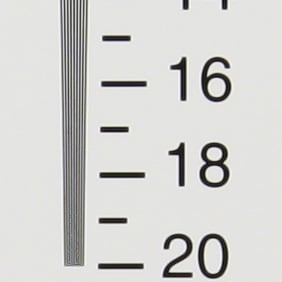 | 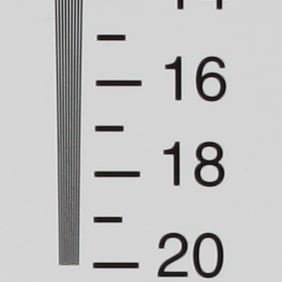 | |
1800 lpph, 17-85mm EF-S at 35mm, f8, 1/40, 100 ISO | 1750 lpph, 18-55mm EF-S at 35mm, f8, 1/60, 100 ISO | |
Canon EF 17-40mm f4.0L USM Using Canon EOS-350D / Digital Rebel XT | ||
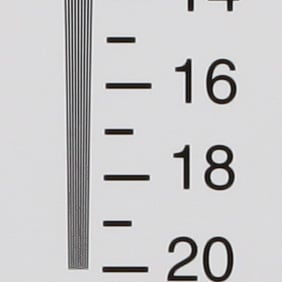 | ||
1850 lpph, 17-40mm EF L at 35mm, f8, 1/50, 100 ISO |
Canon EF-S 17-85mm f4~5.6 IS USM Using Canon EOS-350D / Digital Rebel XT | Canon EF-S 18-55mm f3.5~5.6 Using Canon EOS-350D / Digital Rebel XT | |
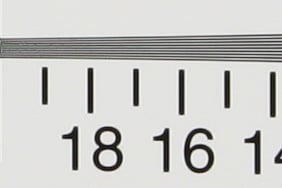 | 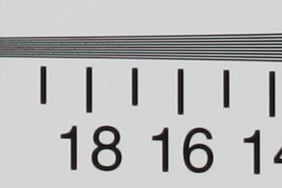 | |
1800 lpph, 17-85mm EF-S at 35mm, f8, 1/40, 100 ISO | 1750 lpph, 18-55mm EF-S at 35mm, f8, 1/60, 100 ISO | |
Canon EF 17-40mm f4.0L USM Using Canon EOS-350D / Digital Rebel XT | ||
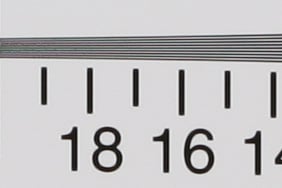 | ||
1800 lpph, 17-40mm EF L at 35mm, f8, 1/50, 100 ISO |
To measure resolving power we photographed the standard ISO 12233 test chart with each lens at f8 using a Canon EOS-350D / Rebel XT in Aperture Priority mode. The crops are taken from the originals and presented here at 100%. Each number represents 100 lines per picture height (lpph), so a figure of 18 means a resolution of 1800 lpph.The image left was taken with the Canon EOS-350D using the 17-85mm EF-S at 35mm f8; the original JPEG measured 2.50MB. With 1800 lpph of horizontal and vertical resolution, the 17-85mm EF-S slightly out-performs the 18-55mm EF-S, although the 17-40 EF L squeezes a fraction more from the 350D / Rebel XT sensor.
Corner Sharpness Results
To measure corner sharpness we photographed the standard ISO 12233 test chart with each lens using the Canon EOS-350D / Digital Rebel XT set to its best quality JPEG settings. Each lens was tested at its widest and longest focal lengths and with various apertures using Aperture Priority mode. The crops are taken from the lower left corner of the chart and presented here at 100%.The Canon 17-85mm lens shows the greatest distortion at wide angle, and unlike its rivals, the corner sharpness doesn’t greatly improve by closing the aperture. Corner sharpness at telephoto is much better, especially at f8 and up.
Canon EF-S 17-85mm f4~5.6 IS USM | Canon EF-S 18-55mm f3.5~5.6 | Canon EF 17-40mm f4.0L USM | ||
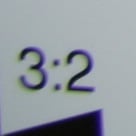 | 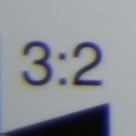 | 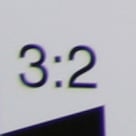 | ||
17-85mm EF-S at 17mm f4.0 | 18-55mm EF-S at 18mm f3.5 | 17-40mm EF L at 17mm f4 | ||
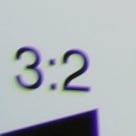 | 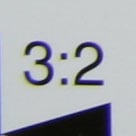 | 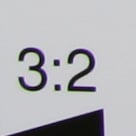 | ||
17-85mm EF-S at 17mm f8 | 18-55mm EF-S at 18mm f8 | 17-40mm EF L at 17mm f8 | ||
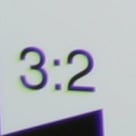 | 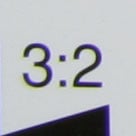 | 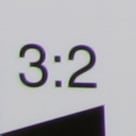 | ||
17-85mm EF-S at 17mm f16 | 18-55mm EF-S at 18mm f16 | 17-40mm EF L at 17mm f16 | ||
Canon EF-S 17-85mm f4~5.6 IS USM | Canon EF-S 18-55mm f3.5~5.6 | Canon EF 17-40mm f4.0L USM | ||
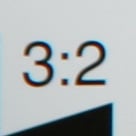 | 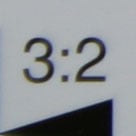 | 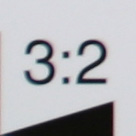 | ||
17-85mm EF-S at 85mm f5.6 | 18-55mm EF-S at 55mm f5.6 | 17-40mm EF L at 40mm f4 | ||
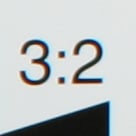 | 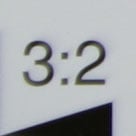 | 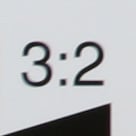 | ||
17-85mm EF-S at 85mm f8 | 18-55mm EF-S at 55mm f8 | 17-40mm EF L at 40mm f8 | ||
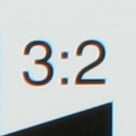 | 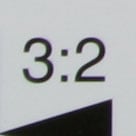 | 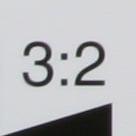 | ||
17-85mm EF-S at 85mm f16 | 18-55mm EF-S at 55mm f16 | 17-40mm EF L at 40mm f16 |
Canon EF-S 17-85mm f4~5.6 IS USM | Canon EF-S 18-55mm f3.5~5.6 | Canon EF 17-40mm f4.0L USM | ||
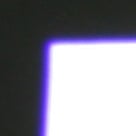 | 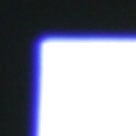 | 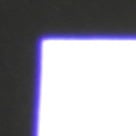 | ||
17-85mm EF-S at 17mm f4.0 | 18-55mm EF-S at 18mm f3.5 | 17-40mm EF L at 17mm f4 | ||
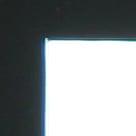 | 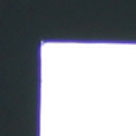 | 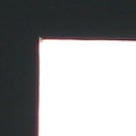 | ||
17-85mm EF-S at 85mm f5.6 | 18-55mm EF-S at 55mm f5.6 | 17-40mm EF L at 40mm f4 |
Canon EF-S 17-85mm macro comparison
To measure macro performance we photographed a custom chart using settings which delivered the maximum possible reproduction. The dark lines are 10mm apart. Each lens was tested with the Canon EOS-350D / Digital Rebel XT at f8 in Aperture Priority mode.
The three lenses delivered quite different macro performance, with the 17-85mm EF-S delivering the least reproduction with a maximum area of 104x70mm. The 17-40mm EF L did a little better, but surprisingly the 18-55mm EF-S performed best of all in this respect with a reproduction around one and a half times greater than the 17-85mm EF-S.
Canon EF-S 17-85mm f4~5.6 IS USM | Canon EF-S 18-55mm f3.5~5.6 | Canon EF 17-40mm f4.0L USM | ||
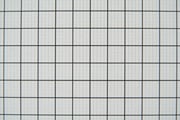 | 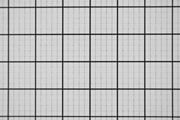 | 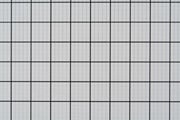 | ||
| 17-85mm EF-S at 85mm f8 Max area of 104x70mm | 18-55mm EF-S at 55mm f8 Max area of 66x44mm | 17-40mm EF L at 40mm f8 Max area of 92x62mm |
The three lenses delivered quite different macro performance, with the 17-85mm EF-S delivering the least reproduction with a maximum area of 104x70mm. The 17-40mm EF L did a little better, but surprisingly the 18-55mm EF-S performed best of all in this respect with a reproduction around one and a half times greater than the 17-85mm EF-S.
| To measure geometric distortion we photographed a custom test chart consisting of a grid pattern with perfectly straight lines. The lenses were tested at their widest focal length with an aperture of f8 using a Canon EOS-350D / Digital Rebel XT in Aperture Priority mode. The images were analysed with Imatest using 5th Order line calculation and the full areas presented here at a reduced resolution.The 17-85mm EF-S exhibits greater barrel distortion than its rivals at their widest focal length, including the budget 18-55mm EF-S model. The 17-40mm EF L performed best in this test. |
Canon EF-S 17-85mm f4~5.6 IS USM | Canon EF-S 18-55mm f3.5~5.6 | Canon EF 17-40mm f4.0L USM | ||
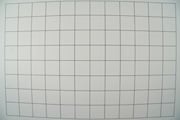 | 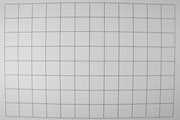 | 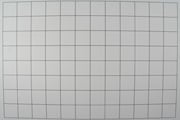 | ||
| 17-85mm EF-S at 17mm f8 Distortion: 5.71% barrel | 18-55mm EF-S at 18mm f8 Distortion: 3.35% barrel | 17-40mm EF L at 17mm f8 Distortion: 2.9% barrel |
Canon EF-S 17-85mm geometry, telephoto
| To measure geometric distortion we photographed a custom test chart consisting of a grid pattern with perfectly straight lines. The lenses were tested at their longest focal length with an aperture of f8 using a Canon EOS-350D / Digital Rebel XT in Aperture Priority mode. The images were analysed with Imatest using 5th Order line calculation and the full areas presented here at a reduced resolution. |
The 17-85mm EF-S exhibits greater pincushion distortion than its rivals at their longest focal length, including the budget 18-55mm EF-S model. Again the 17-40mm EF L turned out the least distorted result.
Canon EF-S 17-85mm f4~5.6 IS USM | Canon EF-S 18-55mm f3.5~5.6 | Canon EF 17-40mm f4.0L USM | ||
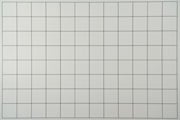 | 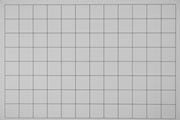 | 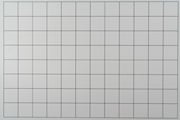 | ||
| 17-85mm EF-S at 85mm f8 Distortion: 0.967% pincushion | 18-55mm EF-S at 55mm f8 Distortion: 0.389% pincushion | 17-40mm EF L at 40mm f8 Distortion: 0.187% pincushion |
With light falling off to an average of 57.8% in the corners, the 17-85mm EF-S was noticeably worse than the other two lenses. The light fall-off at wide angle is probably the worst aspect of this lens and is quite visible in some of our gallery shots on the previous page. The 17-40mm EF L, designed for a full frame camera, unsurprisingly performed best in this test, although light fall-off was still measured at 79.4% even in the corners of the cropped frame of the 350D / Digital Rebel XT.
| To measure lens vignetting and light fall-off we photographed a white target with a highly diffused custom filter. The lenses were tested at their widest focal length with the aperture wide open using a Canon EOS-350D / Digital Rebel XT in Aperture Priority mode. The images were analysed with Imatest and the full areas presented here at a reduced resolution. |
Canon EF-S 17-85mm f4~5.6 IS USM | Canon EF-S 18-55mm f3.5~5.6 | Canon EF 17-40mm f4.0L USM | ||
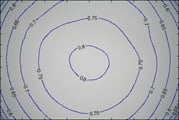 | 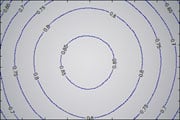 | 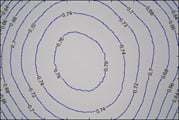 | ||
| 17-85mm EF-S at 17mm f4 Mean corner fall-off: 57.8% | 18-55mm EF-S at 18mm f3.5 Mean corner fall-off: 68.8% | 17-40mm EF L at 17mm f4 Mean corner fall-off: 79.4% |
Canon EF-S 17-85mm uniformity, telephoto
| To measure lens vignetting and light fall-off we photographed a white target with a highly diffused custom filter. The lenses were tested at their longest focal length with the aperture wide open using a Canon EOS-350D / Digital Rebel XT in Aperture Priority mode. The images were analysed with Imatest and the full areas presented here at a reduced resolution. |
Zoomed-in to their longest focal lengths, all three lenses performed quite similarly and while the 17-85mm EF-S was still the worst of the group, it almost caught up with its rivals. Interestingly though, despite being designed for a full-frame body, the 17-40mm EF-L performed no better than the budget 18-55mm EF-S in this test even on a cropped body. Indeed the 18-55mm EF-S scored fractionally higher, although the difference wouldn’t be noticeable in real-life.
Canon EF-S 17-85mm f4~5.6 IS USM | Canon EF-S 18-55mm f3.5~5.6 | Canon EF 17-40mm f4.0L USM | ||
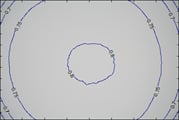 | 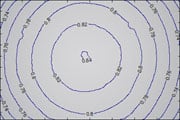 | 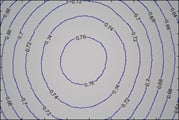 | ||
| 17-85mm EF-S at 85mm f5.6 Mean corner fall-off: 77.5% | 18-55mm EF-S at 55mm f5.6 Mean corner fall-off: 83.8% | 17-40mm EF L at 40mm f4 Mean corner fall-off: 82.2% |




